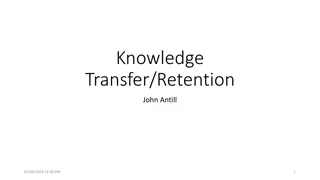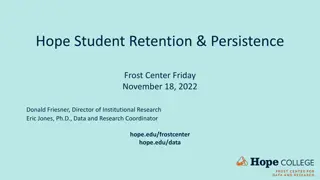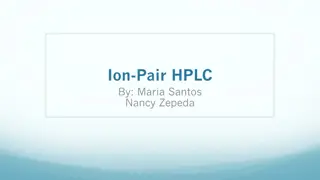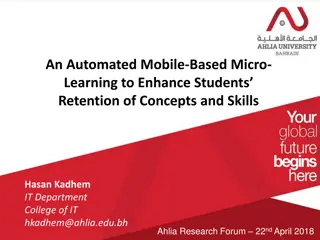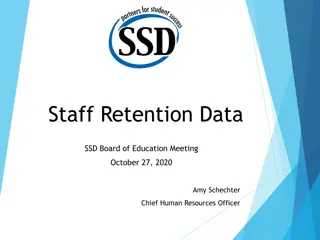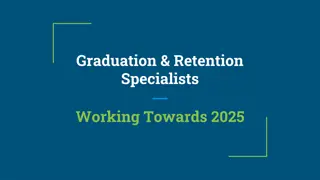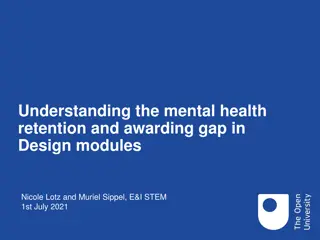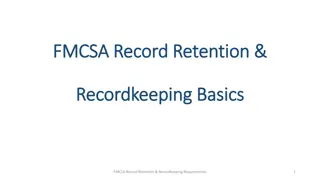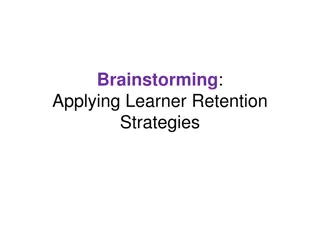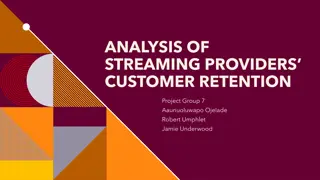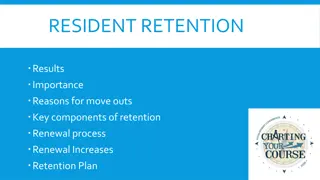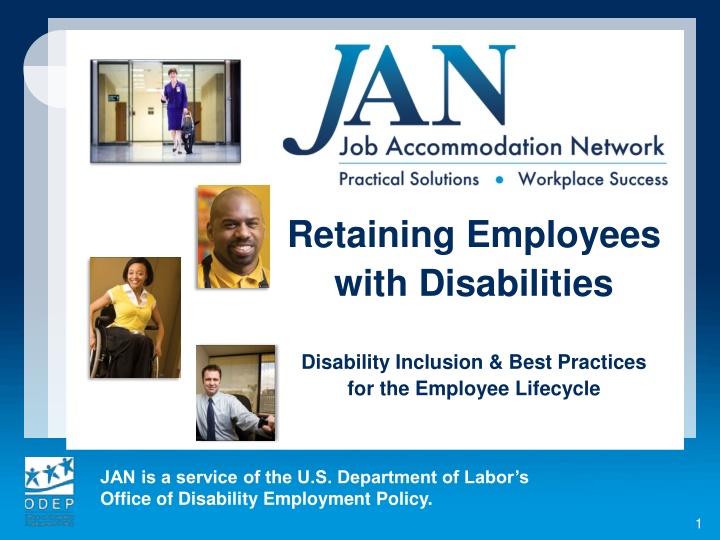
Effective Disability Inclusion Strategies for Retaining Employees
Discover best practices for retaining employees with disabilities through effective disability inclusion strategies, accommodation requests, voluntary self-identification, the interactive process, and job accommodations considerations. Learn about key questions to consider regarding medical impairments, job functions, and performance to ensure a supportive workplace environment.
Download Presentation

Please find below an Image/Link to download the presentation.
The content on the website is provided AS IS for your information and personal use only. It may not be sold, licensed, or shared on other websites without obtaining consent from the author. If you encounter any issues during the download, it is possible that the publisher has removed the file from their server.
You are allowed to download the files provided on this website for personal or commercial use, subject to the condition that they are used lawfully. All files are the property of their respective owners.
The content on the website is provided AS IS for your information and personal use only. It may not be sold, licensed, or shared on other websites without obtaining consent from the author.
E N D
Presentation Transcript
Retaining Employees with Disabilities Disability Inclusion & Best Practices for the Employee Lifecycle JAN is a service of the U.S. Department of Labor s Office of Disability Employment Policy. 1
Request or Disclosure? What is an accommodation request? What is not an accommodation request? Voluntary self- identification When an applicant or employee requests an adjustment or change at work for a reason related to a medical impairment Disclosure absent work-related barrier or request Request for workplace adjustments available to employees without disabilities 2
Questions to Consider About the medical impairment: Can medical documentation be obtained? What is the nature of the impairment? Yes, when the disability and need for accommodation are not known or obvious What are the limitations/restrictions? How long will the impairment last? What is the duration of restrictions? 3
Questions to Consider About job functions & performance: Can job functions be performed in a different way? What job functions, policies, or procedures are affected by the limitations? Is performance or conduct affected? Are there any safety issues? 4
What is the Interactive Process? A collaborative effort to identify effective accommodation solutions Creates a standard of practice Facilitates communication and inclusion Demonstrates good faith Leads to ADA compliance 5
JANs Interactive Process http://askjan.org/media/eaps/interactiveprocessEAP.doc For tips about the process, go to: http://AskJAN.org/media/eaps/interactiveprocessEAP.doc For tips about the process, go to: http://AskJAN.org/media/eaps/interactiveprocessEAP.doc For tips about the process, go to: http://AskJAN.org/media/eaps/interactiveprocessEAP.doc For tips about the process, go to: http://AskJAN.org/media/eaps/interactiveprocessEAP.doc 6
Questions to Consider About job accommodations: Is the accommodation reasonable meaning feasible or plausible? What type of accommodation is needed? Will the accommodation be effective? Job Restructuring, Modified Schedules, Modified Policies, Assistive Technology, Telework, Leave, Reassignment, Service Animal, etc. Is the employee still qualified? 7
Practices to Avoid Failing to recognize a request for reasonable accommodation (RA) and not engaging in the interactive process (IP) Failing to work collaboratively with employee Making excuses for why accommodation can t be provided Being curt, non-empathetic, failing to listen with intent Neglecting to communicate accommodations to essential personnel Ignoring timeframes for responding/implementing accommodation Failing to monitor accommodations Neglecting to adequately document IP 8
Interactive Process Best Practices Educate workforce about RA policy and encourage all employees to discuss, with management/HR, modifications/tools needed to be successful Train hiring managers and supervisors to recognize when an accommodation request is received, respond without delay, and document actions 10
Interactive Process Best Practices Privately engage the employee to discuss accommodation requests Listen, express empathy, and exhibit understanding of concerns shared by employee Build trust through positive, constructive dialogue and by demonstrating interest in identifying solutions 11
Interactive Process Best Practices Use information about work-related limitations and barriers to explore accommodation solutions collaboratively with employee Break-down silos and engage internal and external resources to support the accommodation process 12
Interactive Process Best Practices Document the interactive process beginning to end, to benefit both parties Be responsive DO SOMETHING! Inform essential personnel about accommodations, but preserve confidentiality of medical information 13
Interactive Process Best Practices Monitor accommodations for effectiveness and make changes when necessary Commit to creating an environment where all employees have the ability to contribute and be successful 14
Retention Best Practices Keep disability and accommodation-related information confidential Let employees know who to contact if there is a need for a modification at work due to a personal reason, so the issue can be addressed privately Made a business decision for personal reasons and do not discuss employees' personal information with others 15
Contact JAN (800) 526-7234 (V) - (877) 781-9403 (TTY) AskJAN.org jan@askjan.org (304) 216-8189 via Text janconsultants via Skype 16



